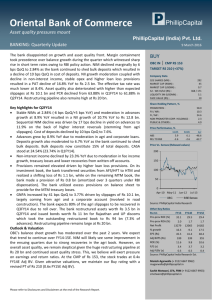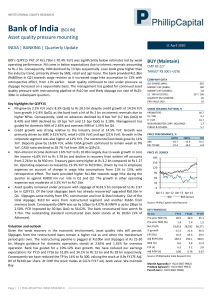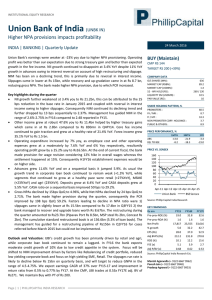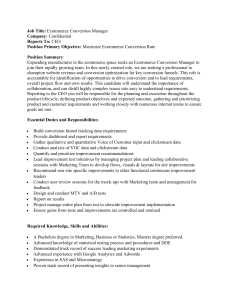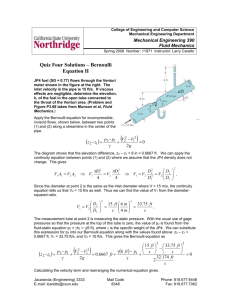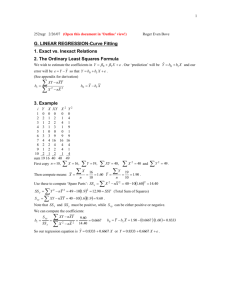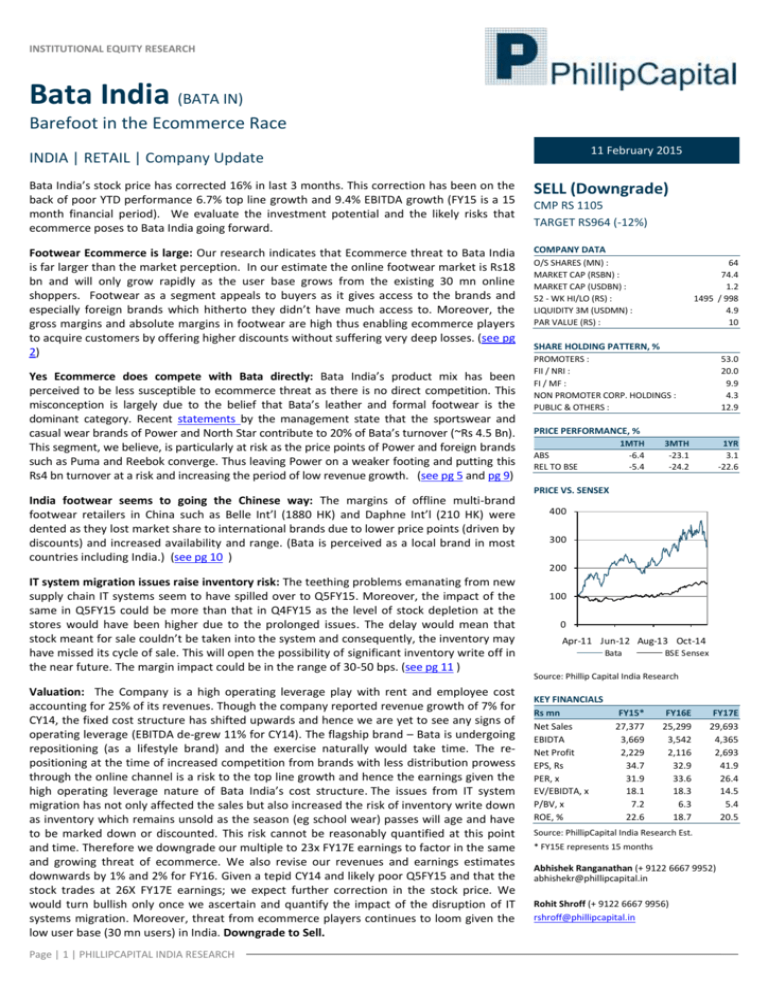
INSTITUTIONAL EQUITY RESEARCH
Bata India (BATA IN)
Barefoot in the Ecommerce Race
11 February 2015
INDIA | RETAIL | Company Update
Bata India’s stock price has corrected 16% in last 3 months. This correction has been on the
back of poor YTD performance 6.7% top line growth and 9.4% EBITDA growth (FY15 is a 15
month financial period). We evaluate the investment potential and the likely risks that
ecommerce poses to Bata India going forward.
SELL (Downgrade)
Footwear Ecommerce is large: Our research indicates that Ecommerce threat to Bata India
is far larger than the market perception. In our estimate the online footwear market is Rs18
bn and will only grow rapidly as the user base grows from the existing 30 mn online
shoppers. Footwear as a segment appeals to buyers as it gives access to the brands and
especially foreign brands which hitherto they didn’t have much access to. Moreover, the
gross margins and absolute margins in footwear are high thus enabling ecommerce players
to acquire customers by offering higher discounts without suffering very deep losses. (see pg
2)
COMPANY DATA
Yes Ecommerce does compete with Bata directly: Bata India’s product mix has been
perceived to be less susceptible to ecommerce threat as there is no direct competition. This
misconception is largely due to the belief that Bata’s leather and formal footwear is the
dominant category. Recent statements by the management state that the sportswear and
casual wear brands of Power and North Star contribute to 20% of Bata’s turnover (~Rs 4.5 Bn).
This segment, we believe, is particularly at risk as the price points of Power and foreign brands
such as Puma and Reebok converge. Thus leaving Power on a weaker footing and putting this
Rs4 bn turnover at a risk and increasing the period of low revenue growth. (see pg 5 and pg 9)
India footwear seems to going the Chinese way: The margins of offline multi-brand
footwear retailers in China such as Belle Int’l (1880 HK) and Daphne Int’l (210 HK) were
dented as they lost market share to international brands due to lower price points (driven by
discounts) and increased availability and range. (Bata is perceived as a local brand in most
countries including India.) (see pg 10 )
IT system migration issues raise inventory risk: The teething problems emanating from new
supply chain IT systems seem to have spilled over to Q5FY15. Moreover, the impact of the
same in Q5FY15 could be more than that in Q4FY15 as the level of stock depletion at the
stores would have been higher due to the prolonged issues. The delay would mean that
stock meant for sale couldn’t be taken into the system and consequently, the inventory may
have missed its cycle of sale. This will open the possibility of significant inventory write off in
the near future. The margin impact could be in the range of 30-50 bps. (see pg 11 )
Valuation: The Company is a high operating leverage play with rent and employee cost
accounting for 25% of its revenues. Though the company reported revenue growth of 7% for
CY14, the fixed cost structure has shifted upwards and hence we are yet to see any signs of
operating leverage (EBITDA de-grew 11% for CY14). The flagship brand – Bata is undergoing
repositioning (as a lifestyle brand) and the exercise naturally would take time. The repositioning at the time of increased competition from brands with less distribution prowess
through the online channel is a risk to the top line growth and hence the earnings given the
high operating leverage nature of Bata India’s cost structure. The issues from IT system
migration has not only affected the sales but also increased the risk of inventory write down
as inventory which remains unsold as the season (eg school wear) passes will age and have
to be marked down or discounted. This risk cannot be reasonably quantified at this point
and time. Therefore we downgrade our multiple to 23x FY17E earnings to factor in the same
and growing threat of ecommerce. We also revise our revenues and earnings estimates
downwards by 1% and 2% for FY16. Given a tepid CY14 and likely poor Q5FY15 and that the
stock trades at 26X FY17E earnings; we expect further correction in the stock price. We
would turn bullish only once we ascertain and quantify the impact of the disruption of IT
systems migration. Moreover, threat from ecommerce players continues to loom given the
low user base (30 mn users) in India. Downgrade to Sell.
Page | 1 | PHILLIPCAPITAL INDIA RESEARCH
CMP RS 1105
TARGET RS964 (-12%)
O/S SHARES (MN) :
MARKET CAP (RSBN) :
MARKET CAP (USDBN) :
52 - WK HI/LO (RS) :
LIQUIDITY 3M (USDMN) :
PAR VALUE (RS) :
64
74.4
1.2
1495 / 998
4.9
10
SHARE HOLDING PATTERN, %
PROMOTERS :
FII / NRI :
FI / MF :
NON PROMOTER CORP. HOLDINGS :
PUBLIC & OTHERS :
53.0
20.0
9.9
4.3
12.9
PRICE PERFORMANCE, %
1MTH
-6.4
-5.4
ABS
REL TO BSE
3MTH
-23.1
-24.2
1YR
3.1
-22.6
PRICE VS. SENSEX
400
300
200
100
0
Apr-11 Jun-12 Aug-13 Oct-14
Bata
BSE Sensex
Source: Phillip Capital India Research
KEY FINANCIALS
Rs mn
Net Sales
EBIDTA
Net Profit
EPS, Rs
PER, x
EV/EBIDTA, x
P/BV, x
ROE, %
FY15*
27,377
3,669
2,229
34.7
31.9
18.1
7.2
22.6
FY16E
25,299
3,542
2,116
32.9
33.6
18.3
6.3
18.7
FY17E
29,693
4,365
2,693
41.9
26.4
14.5
5.4
20.5
Source: PhillipCapital India Research Est.
* FY15E represents 15 months
Abhishek Ranganathan (+ 9122 6667 9952)
abhishekr@phillipcapital.in
Rohit Shroff (+ 9122 6667 9956)
rshroff@phillipcapital.in
BATA INDIA COMPANY UPDATE
Ecommerce in Footwear
The Indian ecommerce market is estimated to be $ 5 Bn and is expected to grow at
over 30%. The lifestyle category i.e. clothing and footwear accounts for over 30% of
the industry. Importantly volume wise this category is the single largest category,
thus accounting for the maximum shipments made. Footwear is estimated to be
around 20% of the lifestyle category which translates to Rs15 bn in value or gross
merchandise value. Jabong derived 28% of its GMV from footwear which on an
annualized basis translates to Rs3 bn of footwear GMV. Therefore, the other major
players such as Myntra, Flipkart, Amazon and Snapdeal would contribute to Rs 15 bn
of footwear GMV.
Competition in every sense
The size of footwear in the nascent ecommerce market is in itself an indication of the
acceptability of buying footwear online. The motivation to purchase ranges from
availability of brands (especially in tier 2 cities and beyond), range, price and size of
choice. Footwear is one of the highest gross margin products and the absolute
margins in foreign sportswear brands is also high due to higher values, thus giving
ecommerce players enough room to discount (couponing not to be missed) and still
acquire customers without high transaction level losses.
Moreover, new brands such Ruosh have emerged in men’s formal and casual wear
offer good products and range. In case of Ruosh (a brand owned by a vendor of Bata),
the brand has adopted a strategy of opening stores in popular malls and high streets
with a wide presence online.
Products consumers most likely to order or purchase in next 12 months
Electronics
41%
100%
Media
Mobile Phones
23%
34%
%
Footwear
26%
Home furnishing
64%
33%
Skincare &
cosmetics
Apparel
26%
61%
Baby care
26%
Source: Forrester Consumer Research, 2014
Page | 2 | PHILLIPCAPITAL INDIA RESEARCH
31%
Attractive discounts on e-commerce portals
BATA INDIA COMPANY UPDATE
Pricing, range and availability erases the distribution equity- Distribution advantage is
being erased rapidly as customers are and are likely to continue moving to foreign
brands at similar price points once they become available. There over 70,000
footwear options available online. Categories such as sportswear and casual footwear
offered by well known brands which were hitherto limited by distribution and
economically unjustifiable store presence are able to increase market share. The
ecommerce channel is estimated to contribute to nearly 30% (20% in FY14) of Puma
India’s turnover. Puma was the late entrant in the Indian sportswear market and has
straddled the ecommerce channel successfully to gain inroads.
Puma, Reebok, Adidas etc have strong presence online even in SKUs under Rs4,000
Source: Amazon India Website
Bata’s presence in Ecommerce – Bata India has limited online presence including its
own portal bata.in. The company offers little over 300 SKUs on Amazon across all its
brands (Bata, Power, Hush Puppies etc) and categories (men, women, sandals etc).
On the other hand ecommerce platforms and marketplaces brings together
competition across product categories and brands such as Ruosh, Clarks, Pavers
England, , Puma, Reebok etc amongst the well known ones to less known ones such
as Alberto Toressi etc all under one roof with a far wider range.
Bata has limited SKUs on their own website
Source: Bata India Website
Page | 3 | PHILLIPCAPITAL INDIA RESEARCH
BATA INDIA COMPANY UPDATE
Bata India’s sports brand Power’s online presence is limited
Source: Amazon India Website
Batas’ presence on Flipkart – 0.1% of the Total SKUs present
Source: Flipkart Website
Page | 4 | PHILLIPCAPITAL INDIA RESEARCH
BATA INDIA COMPANY UPDATE
Competition’s presence on Flipkart – Over 7 X that of Bata. If Lotto and Puma were to be included it would be over 10 X
Source: Flipkart Website
Brands find it viable to sell online – The cost of retailing in India is high and building
distribution takes time. Nike’s largest retailer in India SSIPL reported revenues of Rs
3.9 bn in FY14 and currently operates 285 stores. The average revenue per store is Rs
18-20 mn. SSIP’s retail operations clocked EBITDA margins of 8.8% in FY14 and 6.1%
in H1FY14. Rentals and store overheads would be significantly contributing lower
margins. We estimate a player like Jabong alone would clock Rs 3bn of GMV in CY14
and provide access to over 12,000 pincodes in India. Such a reach is obviously
appealing to brands where the incremental cost of penetration is just the logistics
costs.
SSIPL Retail Operation Data
SSIPL Retail Sales Breakup for FY14
Financial Overview (Rs Mn)
FY11
FY12
FY13
FY14 H1FY15
Sales
2,329
4,106
5,136
5,873
3,032
94
358
317
515
186
4.0%
8.7%
6.2%
8.8%
6.1%
213
289
339
427
446
EBITDA
Others, 6%
Lotto, 7%
Levi's 20%
EBITDA %
No of Stores
Nike , 67%
Source: Company, PhillipCapital India Research
Page | 5 | PHILLIPCAPITAL INDIA RESEARCH
BATA INDIA COMPANY UPDATE
Batas’ presence on marketplaces is better but …
…..Competition’s depth and width is very high
Source: Snapdeal Website
Page | 6 | PHILLIPCAPITAL INDIA RESEARCH
BATA INDIA COMPANY UPDATE
Bata has limited presence on Jabong - one of the leaders in online lifestyle space
The likes of Nike, Puma, Reebok and Adidas have at least 4 times more SKUs than Bata at comparable price points
Source: Jabong Website
Price and online presence is the power not distribution: The brand “Power” faces
the maximum competition from the likes of Puma, Reebok as their pricing, product
range; discounts satiate the customer’s hitherto unfulfilled demand for aspirational
brands at their locations. The ‘Power’ brands shoes (for men) starts at a price of Rs
1,199 per pair and goes up to Rs3,000 per pair. Power along with North Star accounts
for about 20% of Bata’ turnover. The competition in this price category from brands
such as Puma, Reebok, and Adidas is very intense as can be seen below
Page | 7 | PHILLIPCAPITAL INDIA RESEARCH
BATA INDIA COMPANY UPDATE
Moreover, the competition is just not restricted to the range and price points up to
Rs3,000 per pair. It extends beyond Rs3,000 per pair due to coupon discounts offered
by various portals thus resulting in price points up to Rs4,000 also competing. There
are over 700 SKUs up to price points of Rs4,000 on major portals.
Power has limited SKUs on Myntra – A apparel and lifestyle centric portal
International sportswear brands have more depth and variety at comparable price points on Myntra
Source: Myntra website
Page | 8 | PHILLIPCAPITAL INDIA RESEARCH
BATA INDIA COMPANY UPDATE
Price points of international brands are being made more affordable by couponing
Source: Myntra website, PhillipCapital India Research
Implications of the brand “Power” losing market share is significant:
The impact of competition on brand “Power”, which along with North Star
contributes to 20% of Bata India’s turnover, can be very significant for Bata India as
seen below. If the brand doesn’t grow or de-grows the possibility of company
achieving 15% or more growth for FY16E and FY17E looks very difficult as rest of the
portfolio will have to grow at 20% implying a overall LTL growth of over 14% during
this period. The company has not witnessed such high LTL growth in past. Therefore,
in our view, this could be a tall ask.
Implications of Power brand getting impacted
Rs Mn
Revenues
YoY Growth
Contribution of Power & North Star (%)
Contribution of Power & North Star
YoY Growth
Revenues excluding Power & North Star
YoY Growth required to achieve overall growth
Implied overall LTL growth
Source: Company, PhillipCapital India Research
Page | 9 | PHILLIPCAPITAL INDIA RESEARCH
FY15
22,027
20%
4,405
17,621
FY16
25,551
16%
17%
4,405
0%
21,146
20%
14%
FY17
30,124
18%
17%
5,066
15%
25,058
19%
15%
BATA INDIA COMPANY UPDATE
India may go the China way – Chinese footwear companies such as Belle Int’l (1880
HK) and Daphne Int’l (210 HK) have witnessed intense competition from ecommerce
players and foreign brands who have leveraged on the ecommerce platform to reach
consumers across china, thus impacting store performances of Belle and Daphne.
Belle Int’l and Daphne Int’l have seen their LTL growths decline, revenue growth
decline (despite store additions) and reduction in footfalls in the stores due to
intense competition from ecommerce players. The foreign brands especially the
sportswear brands have gained using ecommerce platforms.
Operating performance of Daphne International and Belle International – Declining trend in LTL growth
Daphne International
Belle International
Revenue (HKD mn)
PAT % (rhs)
12,000
Operating profit % (rhs)
SSG
25%
Revenue (RMB mn)
PAT % (rhs)
Operating profit % (rhs)
SSG
50,000
20%
20%
10,000
15%
8,000
10%
6,000
40,000
15%
30,000
10%
5%
20,000
0%
4,000
-5%
2,000
5%
10,000
-10%
0
-15%
2011
2012
2013
0
0%
2011
2014
2012
Source: Company, PhillipCapital India Research:
Nike’s DTC (own store and online) channel in itself contributed to 22% of its 2014
revenues in Greater China. The DTC business grew 38% on constant currency terms
with LTL growth of 20% implying remaining growth from online and new stores.
Nike Greater China Revenues $ Mn
Sales to Wholesale Customers
Growth
Sales Direct to Consumer
Growth
LTL Growth
Contribution to total growth from Online sales & new stores
Source: Company, PhillipCapital India Research:
Page | 10 | PHILLIPCAPITAL INDIA RESEARCH
FY12
2,336
NA
306
NA
NA
NA
FY13
2,126
-9%
407
33%
13%
18%
FY14
2,041
-4%
561
38%
20%
18%
14mth-2013 14mth-2014
BATA INDIA COMPANY UPDATE
ERP (Enterprise Resource Planning) migration issues - sales impact not quantifiable
but inventory risks can be significant
The impact of the IT systems migration impacting the supply chain and disrupting
inventory at store levels is difficult to gauge. Our channel checks indicate that some
stores migrated to the new ERP systems from PoSS (point of sale systems) and then
rolled back to PoSS due to issues of billing. The larger issue was updating of correct
inventory levels where at the backend the system level inventory couldn’t be
reconciled due to integration issues. Typically migrating to ERP systems face
problems when data or master database has to be migrated. In case of companies
which were not on an ERP the migration of database would entail manual punching
of the data into the ERP. In case of inventory errors would arise if the data has been
coded incorrectly or mapped incorrectly in the system.
The inventory levels at company level as on Dec 2014 didn’t reflect any significant
reduction. Therefore, there are three outcomes based on the nature of the problem
1. If SAP implementation did disrupt the inventory in Q4FY15 (only possible at the
store level as system did have inventory of Rs 6.36 bn ) there would have been
lost sales and consequently inventory pile up. The corollary being that the
inventory pile up and relevance as per the season and sub-season (school, festive
etc) would drive the piled up inventory towards mark downs.
2. If the implementation of SAP did not disrupt the business in Q4FY15 significantly,
then the de-growth in sales would have been explained due to poor consumer
sentiment and loss of market share to ecommerce players and foreign brands.
3. A mixture of above two would have impacted the sales.
Therefore, inventory levels in the forthcoming quarters will be critical. Abnormal
increase in inventory levels would mean that inventory write offs or more discounted
sales could impact earnings in the future. Moreover, the stock out issue at stores has
emerged when ecommerce is rapidly making gains in lifestyle category.
Bata Lost sales and implication on inventory (Rs Mn)
Q4 CY14
Expected Increase
Projected Sales
Q4 FY15
Lost Sales
COGS
Assumed Inventory that will remain unsold in FY16
Inventory written off / marked down
FY16E Revenues Rs Mn
Margin Impact
PBT - FY16E ( not accounting for above)
Impact on PBT
5,541
5%
5,818
5,367
451
225
30%
68
25,676
0.26%
3,208
2%
5,541
5%
5,818
5,367
451
225
50%
113
25,676
0.44%
3,208
4%
Source: Company, PhillipCapital India Research:
Bata India’s rising inventory and inventory days pose an earnings risk
7,000
Inventory
300
Inventory days (rhs)
6,000
250
5,000
200
4,000
150
3,000
100
2,000
50
1,000
Source: Company, PhillipCapital India Research:
Page | 11 | PHILLIPCAPITAL INDIA RESEARCH
Q4CY14
Q3CY14
Q2CY14
Q1CY14
Q4CY13
Q3CY13
Q2CY13
Q1CY13
Q4CY12
Q3CY12
Q2CY12
Q1CY12
Q4CY11
Q3CY11
Q2CY11
Q1CY11
-
BATA INDIA COMPANY UPDATE
Financials
Income Statement
Y/E Mar, Rs mn
Net sales
Growth, %
Total income
Raw material expenses
Other Operating expenses
EBITDA (Core)
Growth, %
Margin, %
Depreciation
EBIT
Growth, %
Margin, %
Interest paid
Other Non-Operating Income
Pre-tax profit
Tax provided
Profit after tax
Net Profit
Growth, %
Net Profit (adjusted)
Unadj. shares (m)
Wtd avg shares (m)
Cash Flow
CY13
20,319
10
20,319
-9,488
-7,944
2,887
5.0
14.2
-592
2,295
2.6
11.3
-13
315
2,597
-1,020
1,577
1,577
(2.5)
1,677
64
64
*FY15E
27,377
35
27,377
-12,484
-11,225
3,669
27.1
13.4
-621
3,048
32.8
11.1
-168
398
3,278
-1,218
2,060
2,060
32.9
2,229
64
64
FY16E
25,299
-8
25,299
-11,511
-10,246
3,542
(3.5)
14.0
-712
2,830
(7.2)
11.2
-155
484
3,158
-1,042
2,116
2,116
(5.1)
2,116
64
64
FY17E
29,693
17
29,693
-13,451
-11,877
4,365
23.2
14.7
-804
3,561
25.8
12.0
-168
627
4,020
-1,327
2,693
2,693
27.3
2,693
64
64
Balance Sheet
Y/E Mar, Rs mn
Cash & bank
Debtors
Inventory
Loans & advances
Other current assets
Total current assets
Gross fixed assets
Less: Depreciation
Add: Capital WIP
Net fixed assets
Total assets
CY13
2,558
508
5,827
1,413
112
10,418
6,028
-3,552
245
2,720
13,819
*FY15E
4,523
674
6,499
1,834
149
13,678
6,603
-4,173
245
2,675
17,035
FY16E
6,223
623
5,834
1,695
137
14,513
7,578
-4,885
245
2,938
18,132
FY17E
7,718
731
6,818
1,989
161
17,417
8,553
-5,689
245
3,109
21,207
Current liabilities
Total current liabilities
Total liabilities
Paid-up capital
Reserves & surplus
Shareholders’ equity
Total equity & liabilities
5,421
5,421
5,421
643
7,755
8,398
13,819
7,161
7,161
7,161
643
9,231
9,873
17,035
6,845
6,845
6,845
643
10,645
11,288
18,132
8,068
8,068
8,068
643
12,497
13,139
21,207
Source: Company, PhillipCapital India Research Estimates
* FY15E represents 15 months
Page | 12 | PHILLIPCAPITAL INDIA RESEARCH
Pre-tax profit
Depreciation
Chg in working capital
Total tax paid
Cash flow from operating activities
Capital expenditure
Cash flow from investing activities
Free cash flow
Dividend (incl. tax)
Other financing activities
Cash flow from financing activities
Net chg in cash
CY13 *FY15E FY16E FY17E
2,597 3,278 3,158 4,020
592
621
712
804
-386
445
549
-187
-1,258 -1,218 -1,042 -1,327
1,546 3,125 3,377 3,311
-697
-576
-975
-975
-697
-576
-975
-975
849 2,550 2,402 2,336
-492
-585
-701
-842
323
1
0
0
-169
-584
-701
-842
680 1,966 1,701 1,494
Valuation Ratios
Per Share data
EPS (INR)
Growth, %
Book NAV/share (INR)
FDEPS (INR)
CEPS (INR)
CFPS (INR)
DPS (INR)
Return ratios
Return on assets (%)
Return on equity (%)
Return on capital employed (%)
Turnover ratios
Asset turnover (x)
Sales/Total assets (x)
Sales/Net FA (x)
Working capital/Sales (x)
Working capital days
Liquidity ratios
Current ratio (x)
Quick ratio (x)
Interest cover (x)
Dividend cover (x)
Net debt/Equity (%)
Valuation
PER (x)
PEG (x) - y-o-y growth
Price/Book (x)
EV/Net sales (x)
EV/EBITDA (x)
EV/EBIT (x)
CY13
*FY15E
FY16E
FY17E
26.1
(2.5)
130.7
26.1
35.3
19.2
7.7
34.7
32.9
153.6
34.7
44.3
42.4
9.1
32.9
(5.1)
175.6
32.9
44.0
45.0
10.9
41.9
27.3
204.5
41.9
54.4
41.8
13.1
12.6
20.0
20.6
14.1
22.6
23.7
12.6
18.7
20.9
14.2
20.5
22.9
4.1
1.6
7.6
0.1
43.8
5.6
1.8
10.1
0.1
26.6
5.6
1.4
9.0
0.1
20.8
6.5
1.5
9.8
0.1
20.1
1.9
0.8
176.7
3.4
(30.5)
1.9
1.0
18.1
3.8
(45.8)
2.1
1.3
18.2
3.0
(55.1)
2.2
1.3
21.2
3.2
(58.7)
42.3
(16.8)
8.5
3.4
23.7
29.8
31.9
1.0
7.2
2.4
18.1
21.8
33.6
(6.6)
6.3
2.6
18.3
22.9
26.4
1.0
5.4
2.1
14.5
17.8
BATA INDIA COMPANY UPDATE
Management
Vineet Bhatnagar (Managing Director)
Kinshuk Bharti Tiwari (Head – Institutional Equity)
Jignesh Shah (Head – Equity Derivatives)
(91 22) 2300 2999
(91 22) 6667 9946
(91 22) 6667 9735
Research
Automobiles
Dhawal Doshi
Priya Ranjan
Banking, NBFCs
Manish Agarwalla
Pradeep Agrawal
Paresh Jain
Consumer, Media, Telecom
Naveen Kulkarni, CFA, FRM
Jubil Jain
Manoj Behera
Cement
Vaibhav Agarwal
Engineering, Capital Goods
Ankur Sharma
Hrishikesh Bhagat
Economics
Anjali Verma
(9122) 6667 9969
Retail, Real Estate
Abhishek Ranganathan, CFA
Rohit Shroff
(9122) 6667 9952
(9122) 6667 9756
Infrastructure & IT Services
Vibhor Singhal
Deepan Kapadia
(9122) 6667 9949
(9122) 6667 9992
Portfolio Strategy
Anindya Bhowmik
(9122) 6667 9764
Midcap
Vikram Suryavanshi
(9122) 6667 9951
Technicals
Subodh Gupta, CMT
(9122) 6667 9762
(9122) 6667 9947
(9122) 6667 9766
(9122) 6667 9973
Metals
Dhawal Doshi
Ankit Gor
(9122) 6667 9769
(9122) 6667 9987
Production Manager
Ganesh Deorukhkar
(9122) 6667 9966
Database Manager
Deepak Agarwal
(9122) 6667 9944
(9122) 6667 9967
Oil&Gas, Agri Inputs
Gauri Anand
Deepak Pareek
(9122) 6667 9943
(9122) 6667 9950
(9122) 6667 9759
(9122) 6667 9986
Pharma
Surya Patra
Mehul Sheth
(9122) 6667 9768
(9122) 6667 9996
(9122) 6667 9991
(9122) 6667 9964
(9122) 6667 9989
(9122) 6667 9934
(9122) 6667 9974
Sales Trader
Dilesh Doshi
Suniil Pandit
Execution
Mayur Shah
(9122) 6667 9769
(9122) 6667 9965
(9122) 6667 9962
(9122) 6667 9953
(9122) 6667 9948
Corporate Communications
Sales & Distribution
Ashvin Patil
Shubhangi Agrawal
Kishor Binwal
Sidharth Agrawal
Bhavin Shah
Sr. Manager – Equities Support
Rosie Ferns
(9122) 6667 9971
Zarine Damania
(9122) 6667 9976
(9122) 6667 9747
(9122) 6667 9745
(9122) 6667 9945
Contact Information (Regional Member Companies)
SINGAPORE
Phillip Securities Pte Ltd
250 North Bridge Road, #06-00 Raffles City Tower,
Singapore 179101
Tel : (65) 6533 6001 Fax: (65) 6535 3834
www.phillip.com.sg
MALAYSIA
Phillip Capital Management Sdn Bhd
B-3-6 Block B Level 3, Megan Avenue II,
No. 12, Jalan Yap Kwan Seng, 50450 Kuala Lumpur
Tel (60) 3 2162 8841 Fax (60) 3 2166 5099
www.poems.com.my
HONG KONG
Phillip Securities (HK) Ltd
11/F United Centre 95 Queensway Hong Kong
Tel (852) 2277 6600 Fax: (852) 2868 5307
www.phillip.com.hk
JAPAN
Phillip Securities Japan, Ltd
4-2 Nihonbashi Kabutocho, Chuo-ku
Tokyo 103-0026
Tel: (81) 3 3666 2101 Fax: (81) 3 3664 0141
www.phillip.co.jp
INDONESIA
PT Phillip Securities Indonesia
ANZ Tower Level 23B, Jl Jend Sudirman Kav 33A,
Jakarta 10220, Indonesia
Tel (62) 21 5790 0800 Fax: (62) 21 5790 0809
www.phillip.co.id
CHINA
Phillip Financial Advisory (Shanghai) Co. Ltd.
No 550 Yan An East Road, Ocean Tower Unit 2318
Shanghai 200 001
Tel (86) 21 5169 9200 Fax: (86) 21 6351 2940
www.phillip.com.cn
THAILAND
Phillip Securities (Thailand) Public Co. Ltd.
15th Floor, Vorawat Building, 849 Silom Road,
Silom, Bangrak, Bangkok 10500 Thailand
Tel (66) 2 2268 0999 Fax: (66) 2 2268 0921
www.phillip.co.th
FRANCE
King & Shaxson Capital Ltd.
3rd Floor, 35 Rue de la Bienfaisance
75008 Paris France
Tel (33) 1 4563 3100 Fax : (33) 1 4563 6017
www.kingandshaxson.com
UNITED KINGDOM
King & Shaxson Ltd.
6th Floor, Candlewick House, 120 Cannon Street
London, EC4N 6AS
Tel (44) 20 7929 5300 Fax: (44) 20 7283 6835
www.kingandshaxson.com
UNITED STATES
Phillip Futures Inc.
141 W Jackson Blvd Ste 3050
The Chicago Board of Trade Building
Chicago, IL 60604 USA
Tel (1) 312 356 9000 Fax: (1) 312 356 9005
AUSTRALIA
PhillipCapital Australia
Level 37, 530 Collins Street
Melbourne, Victoria 3000, Australia
Tel: (61) 3 9629 8380 Fax: (61) 3 9614 8309
www.phillipcapital.com.au
SRI LANKA
Asha Phillip Securities Limited
Level 4, Millennium House, 46/58 Navam Mawatha,
Colombo 2, Sri Lanka
Tel: (94) 11 2429 100 Fax: (94) 11 2429 199
www.ashaphillip.net/home.htm
INDIA
PhillipCapital (India) Private Limited
No. 1, 18th Floor, Urmi Estate, 95 Ganpatrao Kadam Marg, Lower Parel West, Mumbai 400013
Tel: (9122) 2300 2999 Fax: (9122) 6667 9955 www.phillipcapital.in
Page | 13 | PHILLIPCAPITAL INDIA RESEARCH
BATA INDIA COMPANY UPDATE
Disclosures and Disclaimers
PhillipCapital (India) Pvt. Ltd. has three independent equity research groups: Institutional Equities, Institutional Equity Derivatives and Private Client Group. This report has been
prepared by Institutional Equities Group. The views and opinions expressed in this document may or may not match or may be contrary at times with the views, estimates, rating,
target price of the other equity research groups of PhillipCapital (India) Pvt. Ltd.
This report is issued by PhillipCapital (India) Pvt. Ltd. which is regulated by SEBI. PhillipCapital (India) Pvt. Ltd. is a subsidiary of Phillip (Mauritius) Pvt. Ltd. References to "PCIPL" in
this report shall mean PhillipCapital (India) Pvt. Ltd unless otherwise stated. This report is prepared and distributed by PCIPL for information purposes only and neither the
information contained herein nor any opinion expressed should be construed or deemed to be construed as solicitation or as offering advice for the purposes of the purchase or sale
of any security, investment or derivatives. The information and opinions contained in the Report were considered by PCIPL to be valid when published. The report also contains
information provided to PCIPL by third parties. The source of such information will usually be disclosed in the report. Whilst PCIPL has taken all reasonable steps to ensure that this
information is correct, PCIPL does not offer any warranty as to the accuracy or completeness of such information. Any person placing reliance on the report to undertake trading
does so entirely at his or her own risk and PCIPL does not accept any liability as a result. Securities and Derivatives marke ts may be subject to rapid and unexpected price movements
and past performance is not necessarily an indication to future performance.
This report does not have regard to the specific investment objectives, financial situation and the particular needs of any s pecific person who may receive this report. Investors must
undertake independent analysis with their own legal, tax and financial advisors and reach their own regarding the appropriateness of investing in any securities or investment
strategies discussed or recommended in this report and should understand that statements regarding future prospects may not be realized. In no circumstances it be used or
considered as an offer to sell or a solicitation of any offer to buy or sell the Securities mentioned in it. The information contained in the research reports may have been taken from
trade and statistical services and other sources, which we believe are reliable. PhillipCapital (India) Pvt. Ltd. or any of its group/associate/affiliate companies do not guarantee that
such information is accurate or complete and it should not be relied upon as such. Any opinions expressed reflect judgments at this date and are subject to change without notice
Important: These disclosures and disclaimers must be read in conjunction with the research report of which it forms part. Receipt and use of the research report is subject to all
aspects of these disclosures and disclaimers. Additional information about the issuers and securities discussed in this research report is available on request.
Certifications: The research analyst(s) who prepared this research report hereby certifies that the views expressed in this research report accurately reflect the research analyst’s
personal views about all of the subject issuers and/or securities, that the analyst have no known conflict of interest and no part of the research analyst’s compensation was, is or will
be, directly or indirectly, related to the specific views or recommendations contained in this research report. The Research Analyst certifies that he /she or his / her family members
does not own the stock(s) covered in this research report.
Independence/Conflict: PhillipCapital (India) Pvt. Ltd. has not had an investment banking relationship with, and has not received any compensation for investment banking services
from, the subject issuers in the past twelve (12) months, and PhillipCapital (India) Pvt. Ltd does not anticipate receiving or intend to seek compensation for investment banking
services from the subject issuers in the next three (3) months. PhillipCapital (India) Pvt. Ltd is not a market maker in the securities mentioned in this research report, although it or its
employees, directors, or affiliates may hold either long or short positions in such securities. PhillipCapital (India) Pvt. Ltd may not hold more than 1% of the shares of the
company(ies) covered in this report.
Suitability and Risks: This research report is for informational purposes only and is not tailored to the specific investment objectives, financial situation or particular requirements of
any individual recipient hereof. Certain securities may give rise to substantial risks and may not be suitable for certain investors. Each investor must make its own determination as to
the appropriateness of any securities referred to in this research report based upon the legal, tax and accounting considerations applicable to such investor and its own investment
objectives or strategy, its financial situation and its investing experience. The value of any security may be positively or adversely affected by changes in foreign exchange or interest
rates, as well as by other financial, economic or political factors. Past performance is not necessarily indicative of future performance or results.
Sources, Completeness and Accuracy: The material herein is based upon information obtained from sources that PCIPL and the research analyst believe to be reliable, but neither
PCIPL nor the research analyst represents or guarantees that the information contained herein is accurate or complete and it should not be relied upon as such. Opinions expressed
herein are current opinions as of the date appearing on this material and are subject to change without notice. Furthermore, PCIPL is under no obligation to update or keep the
information current.
Copyright: The copyright in this research report belongs exclusively to PCIPL. All rights are reserved. Any unauthorized use or disclosure is prohibited. No reprinting or reproduction,
in whole or in part, is permitted without the PCIPL’s prior consent, except that a recipient may reprint it for internal circulation only and only if it is reprinted in its entirety.
Caution: Risk of loss in trading in can be substantial. You should carefully consider whether trading is appropriate for you in light of your experience, objectives, financial resources
and other relevant circumstances.
For U.S. persons only: This research report is a product of PhillipCapital (India) Pvt Ltd. which is the employer of the research analyst(s) who has prepared the research report. The
research analyst(s) preparing the research report is/are resident outside the United States (U.S.) and are not associated persons of any U.S. regulated broker-dealer and therefore
the analyst(s) is/are not subject to supervision by a U.S. broker-dealer, and is/are not required to satisfy the regulatory licensing requirements of FINRA or required to otherwise
comply with U.S. rules or regulations regarding, among other things, communications with a subject company, public appearances and trading securities held by a research analyst
account.
This report is intended for distribution by PhillipCapital (India) Pvt Ltd. only to "Major Institutional Investors" as defined by Rule 15a-6(b)(4) of the U.S. Securities and Exchange Act,
1934 (the Exchange Act) and interpretations thereof by U.S. Securities and Exchange Commission (SEC) in reliance on Rule 15a 6(a)(2). If the recipient of this report is not a Major
Institutional Investor as specified above, then it should not act upon this report and return the same to the sender. Further, this report may not be copied, duplicated and/or
transmitted onward to any U.S. person, which is not the Major Institutional Investor.
In reliance on the exemption from registration provided by Rule 15a-6 of the Exchange Act and interpretations thereof by the SEC in order to conduct certain business with Major
Institutional Investors, PhillipCapital (India) Pvt Ltd. has entered into an agreement with a U.S. registered broker-dealer, Marco Polo Securities Inc. ("Marco Polo").Transactions in
securities discussed in this research report should be effected through Marco Polo or another U.S. registered broker dealer.
PhillipCapital (India) Pvt. Ltd.
Registered office: No. 1, 18th Floor, Urmi Estate, 95 Ganpatrao Kadam Marg, Lower Parel West, Mumbai 400013
Page | 14 | PHILLIPCAPITAL INDIA RESEARCH


